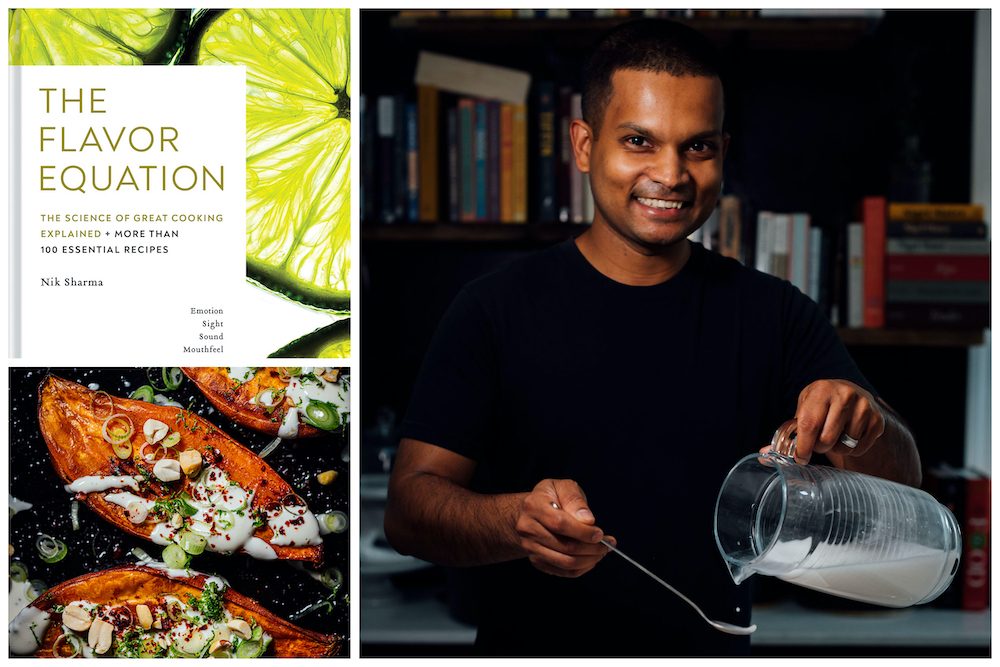Ever since he was a kid experimenting with his home lab, Nik Sharma has been a scientist at heart. But one look at his stunning new book “The Flavor Equation,” which he photographed himself, and it’s plain to see that the molecular-biologist-turned-food writer is also an artist.
Sharma chatted with Christopher Kimball on Milk Street Radio about his unique science-inspired recipes, the dynamic nature of taste and his formula for flavor, which includes unexpected factors, like emotion and sound. Get a sneak peek of their conversation from the excepts below, and listen to the full interview here on our website or via Apple Podcasts.
On the taste of victory and defeat
I came across a study about how people responded to flavor after games. When their favorite team won or lost, people tasted food differently. I thought that was such a fascinating thing. When your favorite team won a game, the food was tasting sweeter. If they lost the game, you were sad and then the food was tasting sour.
On cooking without sight
While researching the book, I spoke to people who had lost their sight or had reduced vision. They were relying on different senses to try and understand how to get about in the kitchen and cook food. And that was really fascinating because I remember talking to this person who had lost his sight and he told me about how the sound of water is different to him, depending on temperature. If the water's hot, it felt denser when it dropped. I started to tie these things to the way I was cooking in the kitchen. I realized that often I could tell by the sound or by the pressure how soft or how firm things are to cut through.
On what (and who) defines taste
There's a committee or rather, a society, of scientists that defines what tastes are. They have certain rules, which I put in the book, and for the longest time, umami had a lot of problems trying to get in. A Japanese scientist that was behind umami research spent years trying to develop experiments to prove that umami could stand alone as a taste. In my book, the chapter about brightness refers to sourness or acidity. That's a canonical taste, and it's well known. But in other cultures, there are other tastes which we don't really acknowledge, because there is still no concrete evidence for them.
On *not* boring fruit salad
I based the spiced fruit salad on the Indian fruit salad called fruit chaat, which uses Indian black salt called kala namak. It's not really black, but a dark violet red color. It contains these sulfur containing substances so when it meets water, you can immediately smell the sulfurous aroma. This particular salad is paired with a couple of warm ingredients like chilies, but you can put any fruit in. Then you've got this salt that completely changes everything. For the first about 20 to 30 minutes, you'll smell this eggy smell and then it completely goes away. There's just so much unexpectedness when you taste it.
On his childhood
I loved biochemistry so much that I had a lab at home as a kid. I remember my parents thought, you know, we're going to encourage him in this. And I remember my dad taking me to buy test tubes and beakers. And so, I would burn sheets in the house and get scolded and reprimanded for all of that. I burned a lot of stuff in my parents’ home, but I was never told to not do it again.
Quotes have been edited for clarity.
See here for more from Milk Street Radio, and join the conversation on Facebook, Twitter, Instagram and Pinterest.



